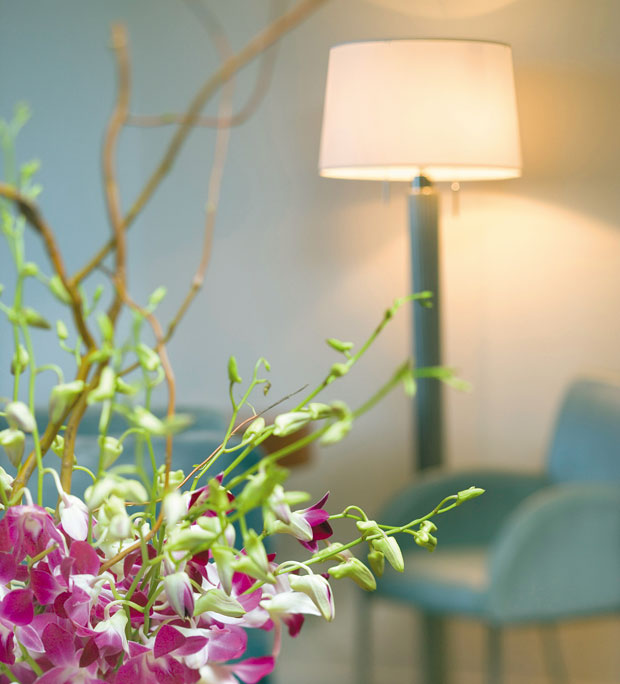If overhead lighting is too much for your home atmosphere — and your energy bill — find the perfect balance of brightness with these simple layering styles
Although studies have shown multi-tasking is inefficient compared to accomplishing tasks one at a time, I still like to do it. While catching up with my fiance Scott on the day’s events, with the TV on in the background, I’ll prepare food, comb through magazines for article ideas, or catch up on handwritten correspondence. However, unless we have the main overhead lights on, I can’t get any of these extra tasks done. There is just not enough light in our space.

But if we do turn on the overhead lights, this is not the most efficient use of energy, nor does it provide the most pleasing atmosphere. For these reasons, designers often recommend layering your lights. Layering can help balance a room, minimize glare and shadows and save energy by giving you the option to increase or decrease the amount of light when needed. If you plan to layer lighting in your own home, you’ll need to start by getting to know the three types of layers:
Ambient: This is the general lighting that serves as the base. It’s usually the primary source of lighting for a room, and it’s often mounted overhead. Think of flush-mounted ceiling fixtures, chandeliers, pendants or adjustable track lighting.
Task: As the name suggests, this type of lighting helps for specific tasks. In the kitchen, task lighting might be placed over the stove for cooking or under the overhead cabinets for chopping. In the bathroom, lights around the mirror would serve as task lighting to help you see yourself better. In the living room, you might use a lamp as task lighting for reading the paper.
Accent: This type of lighting is often used to bring out architectural details or bring attention to certain focal points of a room. It’s usually lower voltage, so it won’t be as bright as ambient or task lighting. You might opt for accent lighting in a cabinet to highlight a collection, or you might use it to illuminate a photo or piece of art.
If you’re tight on a budget, opt for ambient lighting first, then task, then accent. If you want the ability to use less energy but with only one type of lighting, consider installing dimmers or switches, so you can adjust the light levels as needed.
Have a comment or question for Joanne? Email thefixisinhawaii@gmail.com.